MEL asked writer Ryan Bradley to tour Los Angeles, imagining what we might lose after the Big One strikes. Read the entire series here.
We should probably begin with the name and the guy who coined, codified and celebrated what the dingbats stood for. The name comes from the starburst design so often adorning the building’s front — a weird geometric sunny splash, like the font, or a midcentury starfish. The man who first called the spare, two-story wood and stucco walk-ups dingbats was a British architectural historian and critic named Reyner Banham. He loved L.A., and has a completely dated but weird and wonderful TV special about his love for the city (early on, enjoying an ice cream at a drive-in, he asks the artist Ed Ruscha — another L.A. transplant — what he should show visitors wanting to understand the place. “Gas stations,” is Ruscha’s reply). Banham, in his book about L.A., The Architecture of Four Ecologies, writes that “the dingbat, left to its own devices, often exhibits the basic characteristics of a primitive modern architecture… skinny steel columns and simple boxed balconies, and extensive overhangs to shelter four or five cars.” Only, this is the dingbats from the back, or the sides, all of a piece, all in the same uniform. “But out the front, dingbats cannot be left to their own devices; the front is a commercial pitch and a statement about the culture of individualism.”
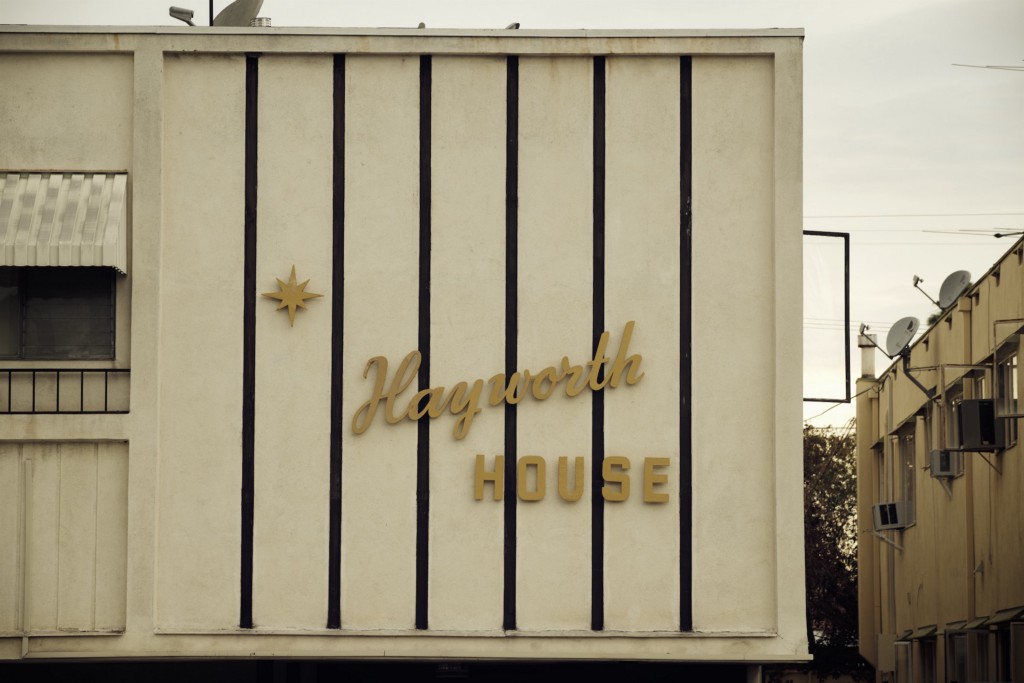
The Riviera Palms, Aloha Gardens, The Hayworth House, Byron Arms, The Tropika, The Belvan, the Mediterranean, The Caribbean, The Foutain Blu, The Waterworks, The Unique — almost as a rule a dingbat apartment building has a name, and the name is written fanciful letters right out front, an advertisement for the building and the (good? classy? beachy? breezy?) life within. The problem with dingbats is also what makes them so compelling: As charming as they are from the street and in the cityscape, they are at their hearts and foundations slapped-together apartment buildings, as cheaply and quickly constructed as possible, maximizing revenue on single family lots in the postwar boom and on into the 1970s.
Ironically, it was a law banning new construction from including parking spaces that required backing out onto the street that killed off new construction of the classic dingbat design—a design with efficiency we now recognize as deadly, because the living spaces are above parking spaces. In making room for cars below, the dingbat leaves out room for the extra support necessary to survive a major earthquake. The architect Joshua G. Stein has written that a “dingbat is tenement housing with a happy face, where the ghettoized squalor of nineteenth-century New York is replaced by the global itinerancy of post-Fordist Los Angeles.”
Stein’s essay is mostly about the dingbat aesthetic as used in the film Slums of Beverly Hills. He describes a scene at the beginning of the movie when protagonist Vivian Abramowitz (Natasha Lyonne, perfect as usual) walks past a neighbor’s apartment as the neighbor eats a bowl of cereal, staring out the window, past the shared hallways, right through her and into the brightness beyond. L.A. is a city obsessed with its twin private spaces, home life and car life, yet it’s a very dense place, and often when you’re in your home or in your car, you aren’t living privately, not really, even as you want to believe that you are. Your neighbors can hear you and sometimes see you; other drivers can definitely see you and often hear you.
Stein calls this “a landscape of aggregate micro realities.” When I first moved to L.A. I was surprised at how much louder my apartment was than in New York — not that the street was louder, but the apartment was more open, had more widows, so more sound came in. And so many of my windows now looked directly upon my neighbors’ apartments. Our space was bigger, more like a home than any apartment I’d lived in before, but also it faced and let in a lot more of the world in subtle and not-so-subtle ways.
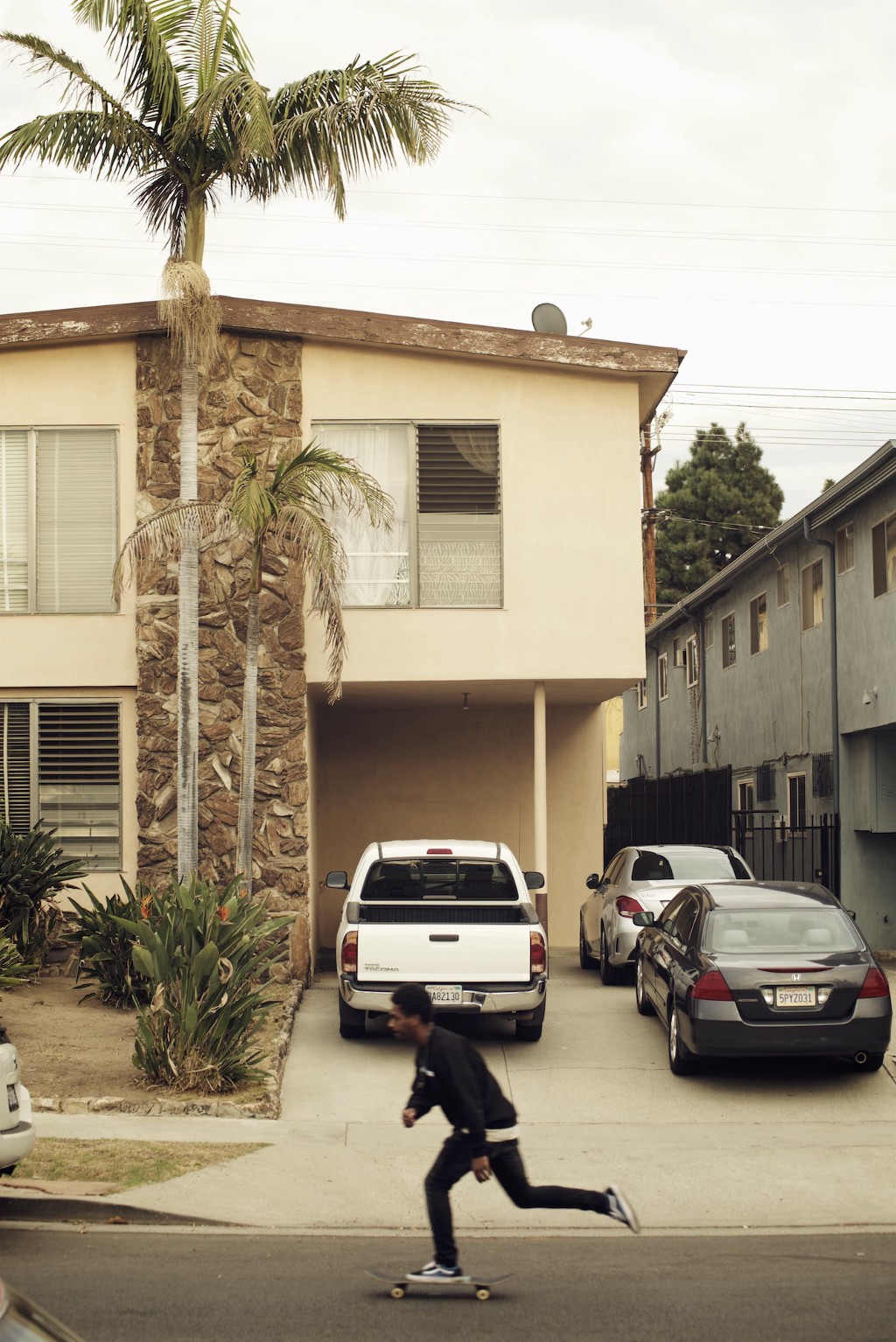
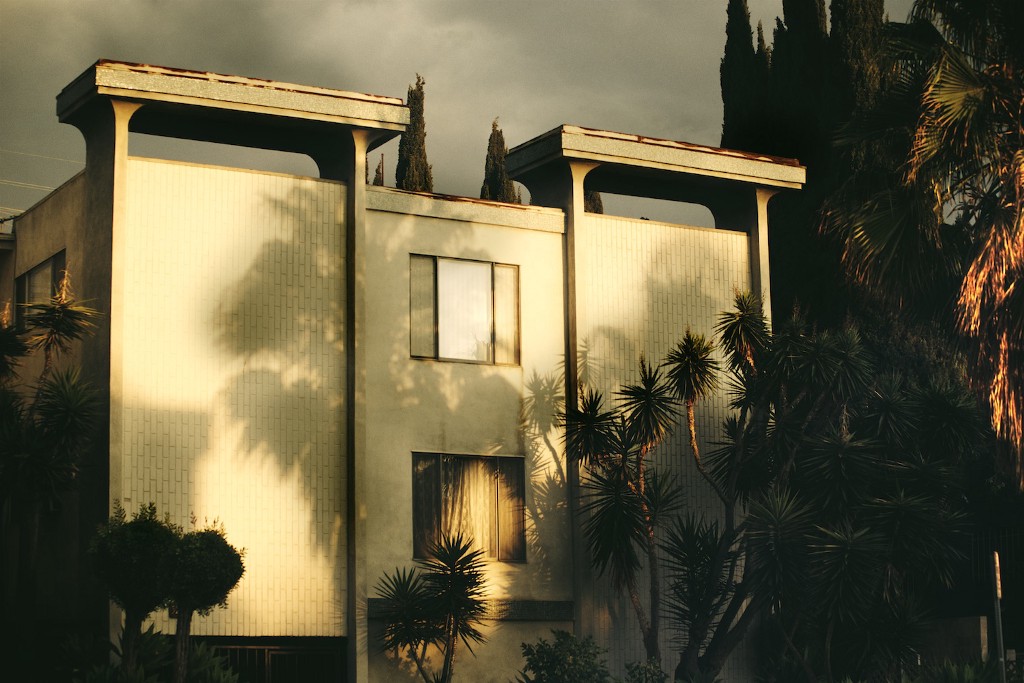
In 2010, around the same time that professors were assembling their list of at-risk buildings in a big quake, the L.A. Forum for Architecture and Urban Design held a competition called Dingbat 2.0. The building needed rethinking; it “no longer fulfills the changing needs of a new Los Angeles. The majority of new immigrants to L.A. no longer arrive from Middle America and instead they carry with them different traditions of individuality and family life. The car (and the development patterns it demands) is no longer sustainable in a metropolis whose very identity is synonymous with ‘car culture.’” But, the judges noted, it was also important to realize that the dingbat was in many ways an example of very successful building design. The dingbats were everywhere, so what about the form, even abstractly, could be reappropriated?
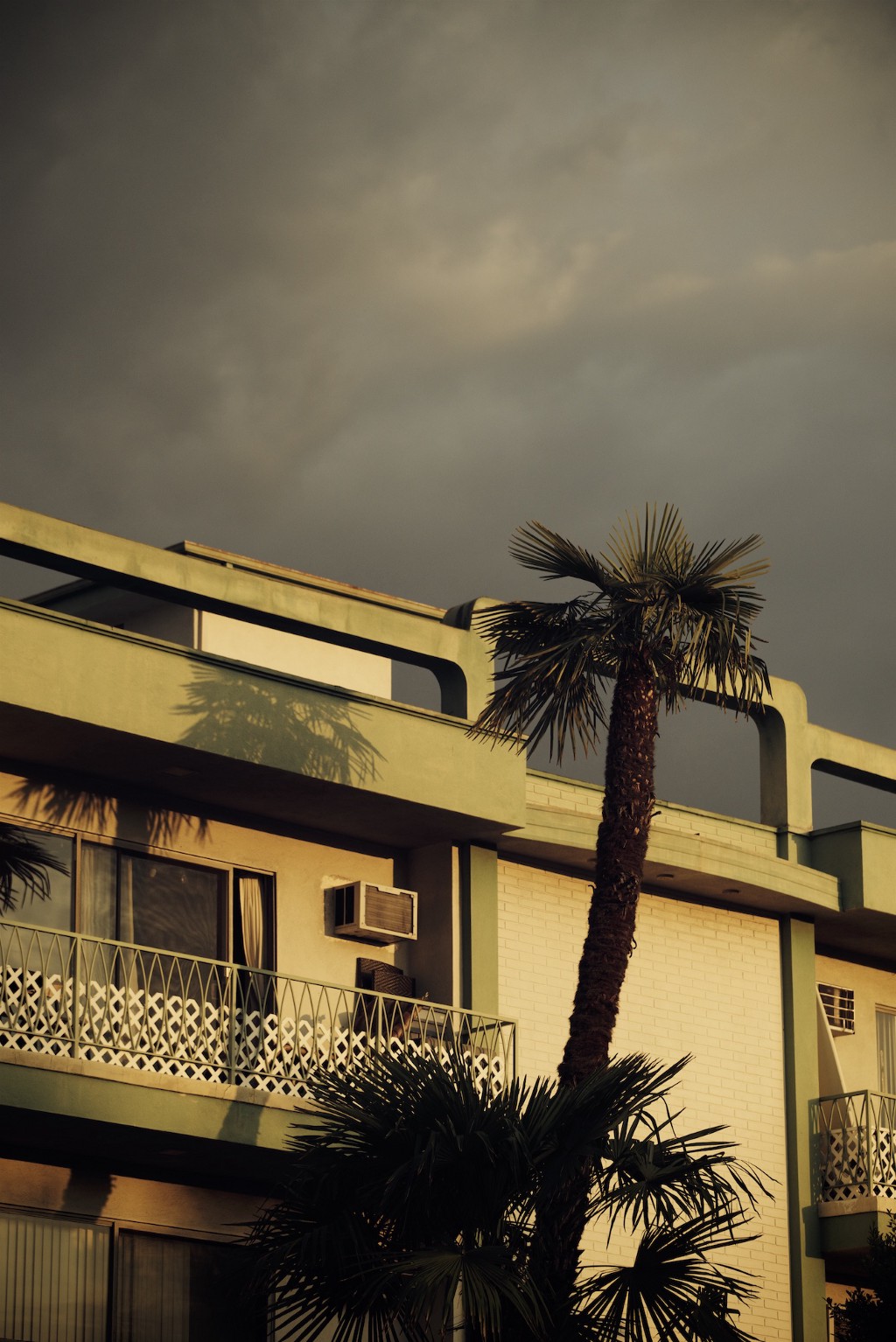
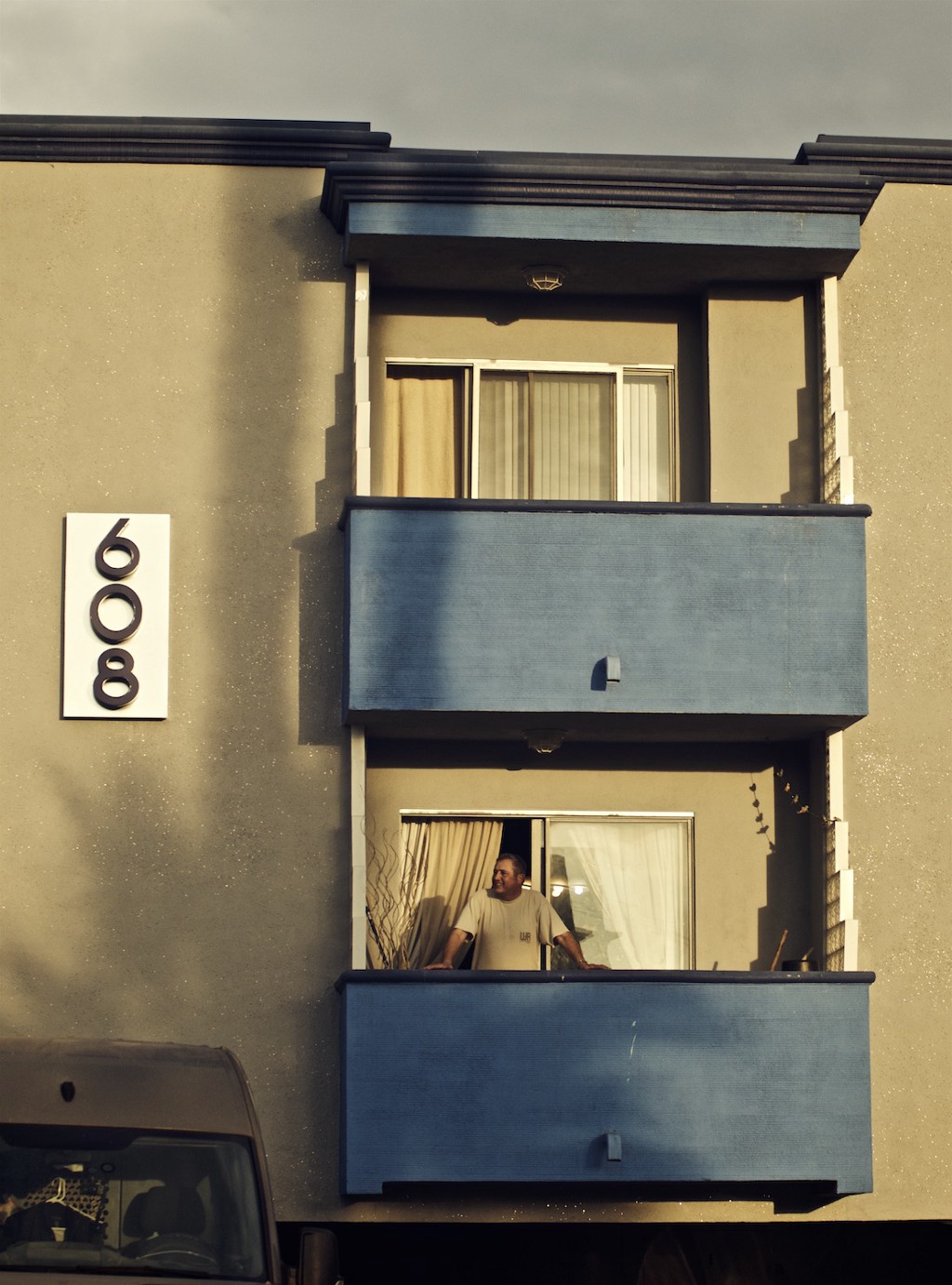
The winning design, called “Microparcelization,” had the dingbats torn down and replaced with small, single-family homes, as many as six to a lot. Each home would be different in style, and slightly unfinished, with a little garden space, too — enough work left upon moving in to make each small house a personalized home. The abstract lessons they’d taken from the dingbat was twofold: dense, single-family-home living, and the dream of creating a life of one’s own making inside it. That’s what the fanciful names convey: not just space to live, but space to create.
